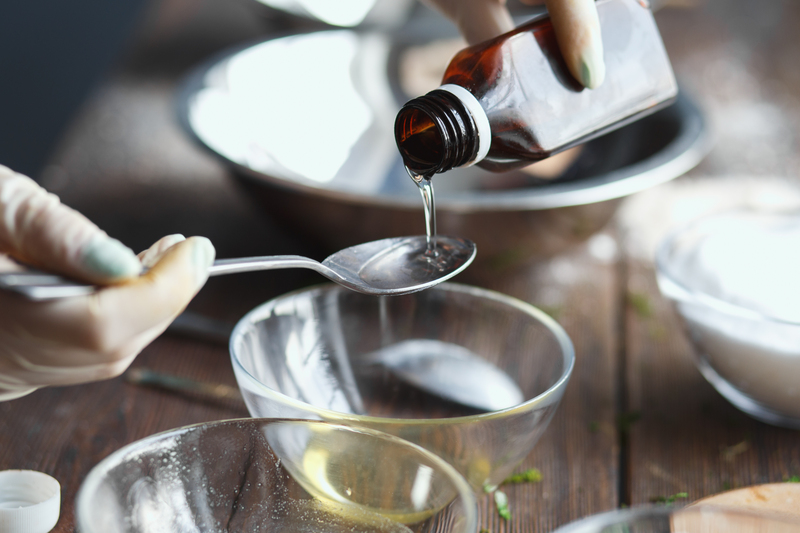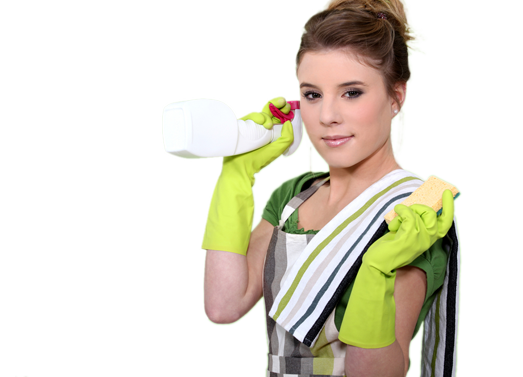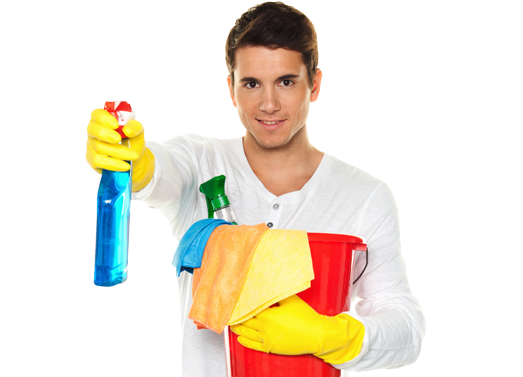Transform Your Space with Impeccably Clean uPVC Window Frames
Posted on 06/06/2025
Transform Your Space with Impeccably Clean uPVC Window Frames
uPVC window frames have become one of the most popular choices for homeowners and designers alike, thanks to their durability, energy efficiency, and sleek appearance. However, to maintain their aesthetic appeal and functionality, it is essential to keep them impeccably clean. In this comprehensive guide, you'll discover why spotless uPVC window frames can transform your home or office, practical tips and advanced cleaning techniques, common maintenance mistakes to avoid, and the lasting benefits of a consistent cleaning routine. Let's unlock the full potential of your space!
Why Clean uPVC Window Frames Matter
uPVC window frames are more than just a structural element -- they're a vital part of your property's first impression. A clean window frame not only brightens up your rooms but also offers several functional and aesthetic advantages:
- Improved Curb Appeal: Sparkling uPVC frames enhance the look of your property, making it inviting and well-maintained.
- Longevity: Regular cleaning prevents the buildup of pollutants, dust, and grime, preserving the material's integrity for years.
- Energy Efficiency: Clean frames support the airtightness and insulation qualities of uPVC, helping you save on utility bills.
- Healthier Environment: Removing allergens, pollution, and mold from window frames contributes to healthier indoor air.
- Increased Property Value: Well-maintained fixtures often translate into a higher property valuation.

Understanding uPVC Window Frames
uPVC, which stands for unplasticized polyvinyl chloride, is a robust and low-maintenance material widely used for window frames. Its natural resistance to weather, rot, corrosion, and chemical erosion makes it an excellent choice for modern homes and commercial spaces. While uPVC is marketed as 'maintenance-free', it truly shines when given regular attention--especially in high-traffic or pollution-prone areas, where dirt can accumulate quickly.
Common Stains and Challenges on uPVC Frames
- Dust and Everyday Grime: Accumulated from indoor and outdoor air.
- Mildew and Mold: Especially in damp areas or where condensation is frequent.
- Bird Droppings and Pollen: Can cause discoloration and hard-to-remove marks.
- Grease and Fingerprints: Often found around handles and opening mechanisms.
- Rust and Mineral Deposits: Around fittings if exposed to water regularly.
Essential Supplies for Impeccable uPVC Window Frame Cleaning
Before you start, it's essential to gather the right tools. Cleaning uPVC window frames does not require expensive or specialized equipment. Here's what you'll need:
- Soft Sponge or Microfiber Cloth: Abrasive materials may scratch the surface.
- Mild Detergent or uPVC Cleaner: Avoid harsh chemicals like bleach that can cause yellowing.
- Bucket of Warm Water: To rinse away loosened dirt.
- Old Toothbrush: For cleaning corners and crevices.
- Spray Bottle: For even application of cleaning solution.
- Rubber Gloves: To protect your hands.
Step-by-Step Guide to Immaculate uPVC Window Frames
Step 1: Initial Dusting
Begin by removing surface dust and debris using a clean, dry microfiber cloth. Pay attention to the corners and edges, where dust can settle over time.
Step 2: Mix Your Cleaning Solution
Mix a small amount of mild detergent or liquid soap in a bucket of warm water. If you prefer, use a specialized uPVC window frame cleaner, which is formulated to remove stubborn dirt without causing damage.
Step 3: Wipe Down the Frames
Dip your sponge or cloth into the soapy water, wring out excess liquid, and gently wipe the window frames. For persistent stains, let the cleaning solution sit for a few minutes before scrubbing gently.
Step 4: Scrub Tight Spots
For corners, hinges, and crevices, use an old toothbrush or a soft brush. This will help dislodge dirt that your cloth or sponge can't reach.
Step 5: Rinse Thoroughly
Use a clean, damp cloth with just water to wipe away any remaining soap or cleaning solution. Residue can attract more dust if not properly rinsed off!
Step 6: Dry for a Streak-Free Finish
Always dry the frames with a soft, lint-free cloth. This not only prevents water spots, but also leaves the surface gleaming.
Step 7: Polish for Added Shine
If desired, apply a small amount of commercial uPVC polish or a solution of three parts vinegar to one part water using a spray bottle. Buff gently for extra shine.
Best Practices for Ongoing uPVC Window Frame Maintenance
Maintaining spotless uPVC window frames isn't a one-time affair. Adopting a proactive cleaning schedule ensures lasting beauty. Here are tried-and-tested practices:
- Clean Quarterly: For most homes, a thorough cleaning every three months is ideal. More frequent cleaning may be needed in pollution-heavy or coastal areas.
- Address Stains Immediately: Don't let bird droppings, tree sap, or accidental spills stay on the frame--clean them as soon as possible to prevent permanent marks.
- Lubricate Moving Parts: Keep hinges and locks in good working order with a drop of silicone lubricant after cleaning.
- Inspect for Damage: Regularly check for cracks, gaps, or loose seals and address them promptly to avoid moisture ingress and energy loss.
- Avoid Harsh Chemicals and Abrasives: These can strip the uPVC's outer layer, leading to discoloration and weakening over time.
Advanced Tips for Challenging Stains on uPVC Frames
Over time, persistent stains might diminish the brilliance of your window frames. Here's how to address specific issues for impeccably clean uPVC frames:
- Grease and Sticky Residues:
- Apply a mix of vinegar and water (1:3 ratio) for natural degreasing.
- For tougher stains, a dab of uPVC cream cleaner can work wonders.
- Mold and Mildew:
- Mix one part white vinegar with one part water and gently scrub affected areas.
- Avoid bleach, as it can damage uPVC and discolor frames.
- Rust Stains:
- Use a soft cloth with a non-abrasive cleaner or specialist rust remover suitable for uPVC.
- Paint Splatters:
- Carefully use a plastic scraper to lift dried paint, then gently wipe with soapy water.
- Mineral Deposits:
- Lime scale removers or a vinegar rinse can help clear stubborn mineral build-ups.
What to Avoid When Cleaning uPVC Window Frames
- Abrasive Cleaning Pads: These can scratch the surface and leave unsightly marks.
- Harsh Chemicals: Bleach, ammonia, and solvent-based cleaners may damage and discolor uPVC.
- Pressure Washers: High pressure can force water into the frames and degrade seals.
- Leaving Soap Residue: Unrinsed soap attracts dirt and leads to streaks.
Eco-Friendly Cleaning Solutions for uPVC Window Frames
Looking to minimize your environmental impact? There are several green cleaning options that deliver outstanding results for pristine uPVC frames:
- White Vinegar: Naturally cuts through grease and is effective on mildew.
- Baking Soda Paste: Mix with water and apply gently to remove tough grime without scratching.
- Lemon Juice: Use as a brightening agent for white uPVC and to neutralize odors.
- Olive Oil: A tiny amount can restore lost sheen after cleaning.
By using these DIY, non-toxic solutions, you not only safeguard your health but also prolong the lifespan of your window frames.
Benefits of Impeccably Clean uPVC Window Frames
Making the effort to maintain clean and spotless uPVC windows offers a multitude of rewards:
- Maximized Light and View: Eliminating grime means your windows let in more natural light and your views stay unobstructed.
- Reduced Maintenance Costs: Regular cleaning prevents long-term damage, minimizing the need for repairs or replacements.
- Positive Impression: Whether it's guests, neighbors, or potential buyers, beautifully clean windows elevate the entire property.
- Enhanced Energy Efficiency: Clean, undamaged frames ensure seals work as designed to retain heat in winter and keep cool in summer.
- Hygienic Living Space: Say goodbye to mold, bacteria, and allergens around your windows, leading to a healthier environment.
Frequently Asked Questions About uPVC Frame Cleaning
How often should I clean my uPVC window frames?
Ideally, give your window frames a deep cleaning every three months, or monthly if you live in a high-pollution or coastal area.
Are vinegar and baking soda safe to use?
Yes, both are safe when used as directed and do not scratch or damage uPVC. Avoid using them in excess or leaving residues.
Can I paint over stained uPVC frames?
While possible, painting is a last resort. Specialist uPVC paints are available, but thorough cleaning and preparation are essential for adhesion.
My frames look yellowed. Can this be reversed?
Minor discolouration may improve with commercial uPVC cleaners, but sun-induced yellowing is often permanent. Consistent cleaning can help prevent worsening.

Professional Cleaning and Restoration for uPVC Window Frames
If your frames are extremely soiled, faded, or damaged, professional restoration services may be required. These experts can:
- Deep-clean stubborn stains and buildup safely.
- Use restoration compounds to revive color and finish.
- Repair minor damage, cracks, or sealant issues.
- Offer protective treatments to keep frames cleaner for longer.
While most homeowners can handle routine cleaning, an annual professional assessment helps prolong the life and beauty of your uPVC window frames.
Conclusion: Unleash the True Potential of Your Space with Spotless uPVC Window Frames
Transforming your space starts with attention to detail. With impeccably clean uPVC window frames, you'll enjoy brighter interiors, fresher air, and a sense of pride in your home or business. Whether you prefer DIY or professional care, consistent maintenance will ensure your investment in uPVC windows continues to pay aesthetic and practical dividends for many years.
Begin your journey toward a cleaner, more inviting space today -- your uPVC windows are the perfect place to start!



